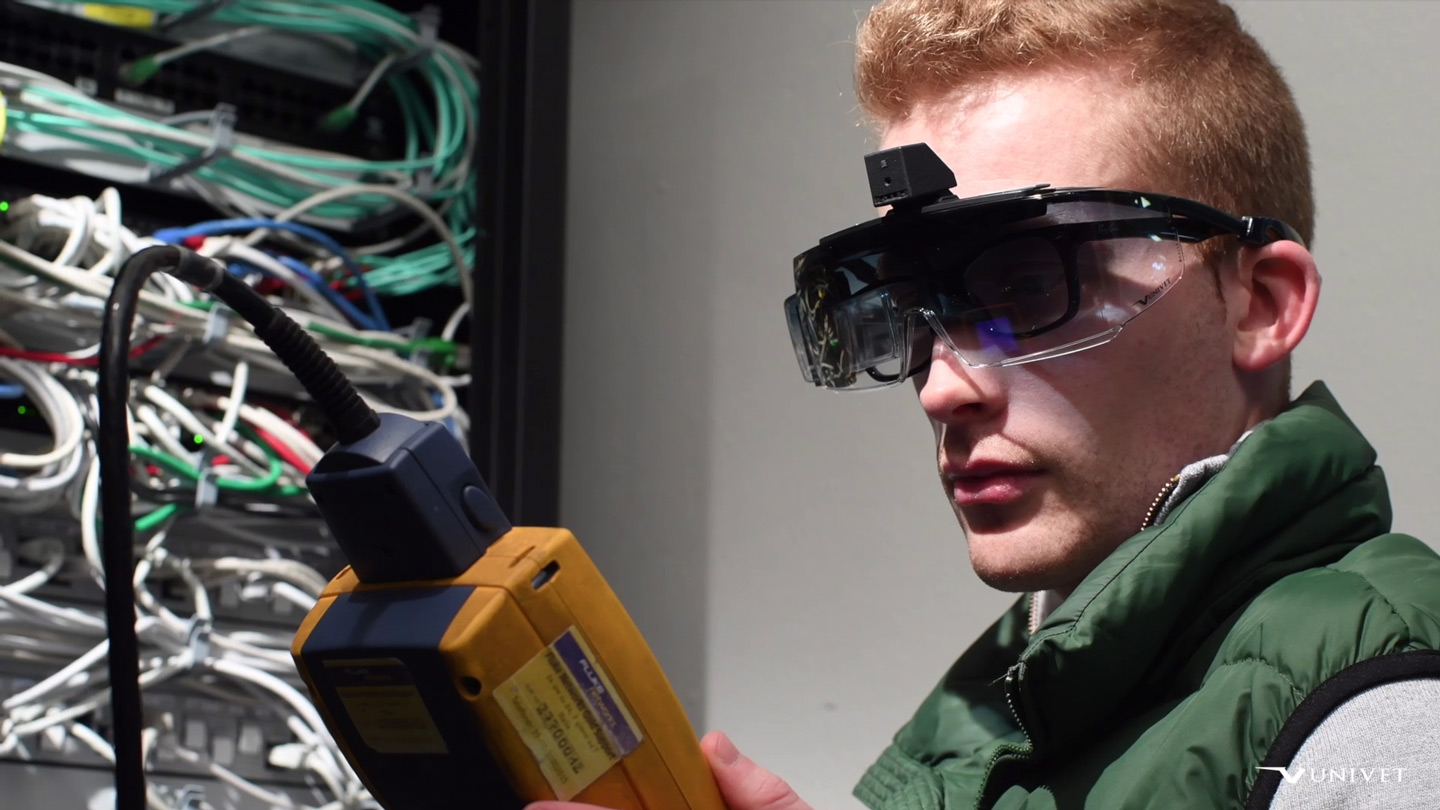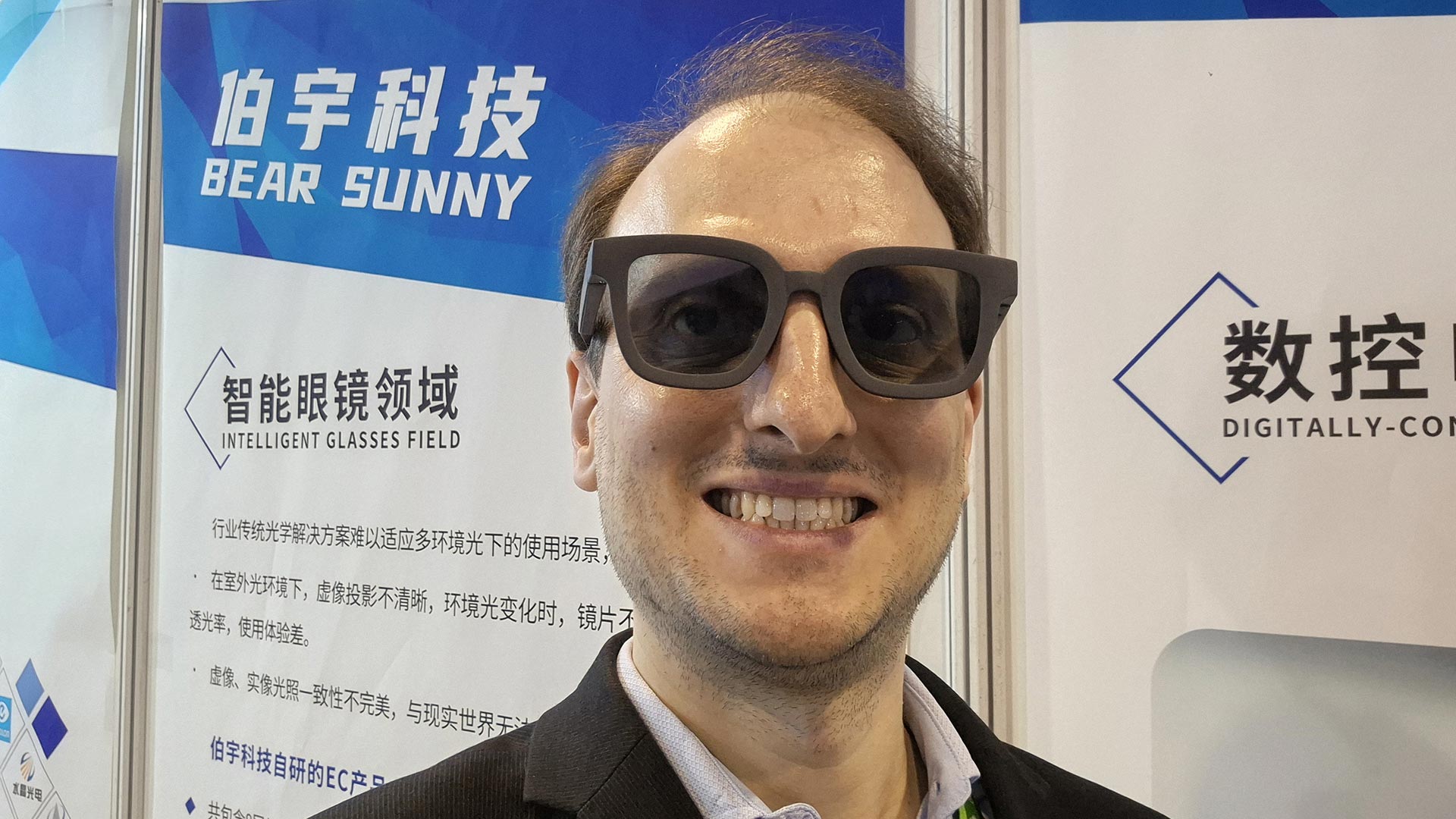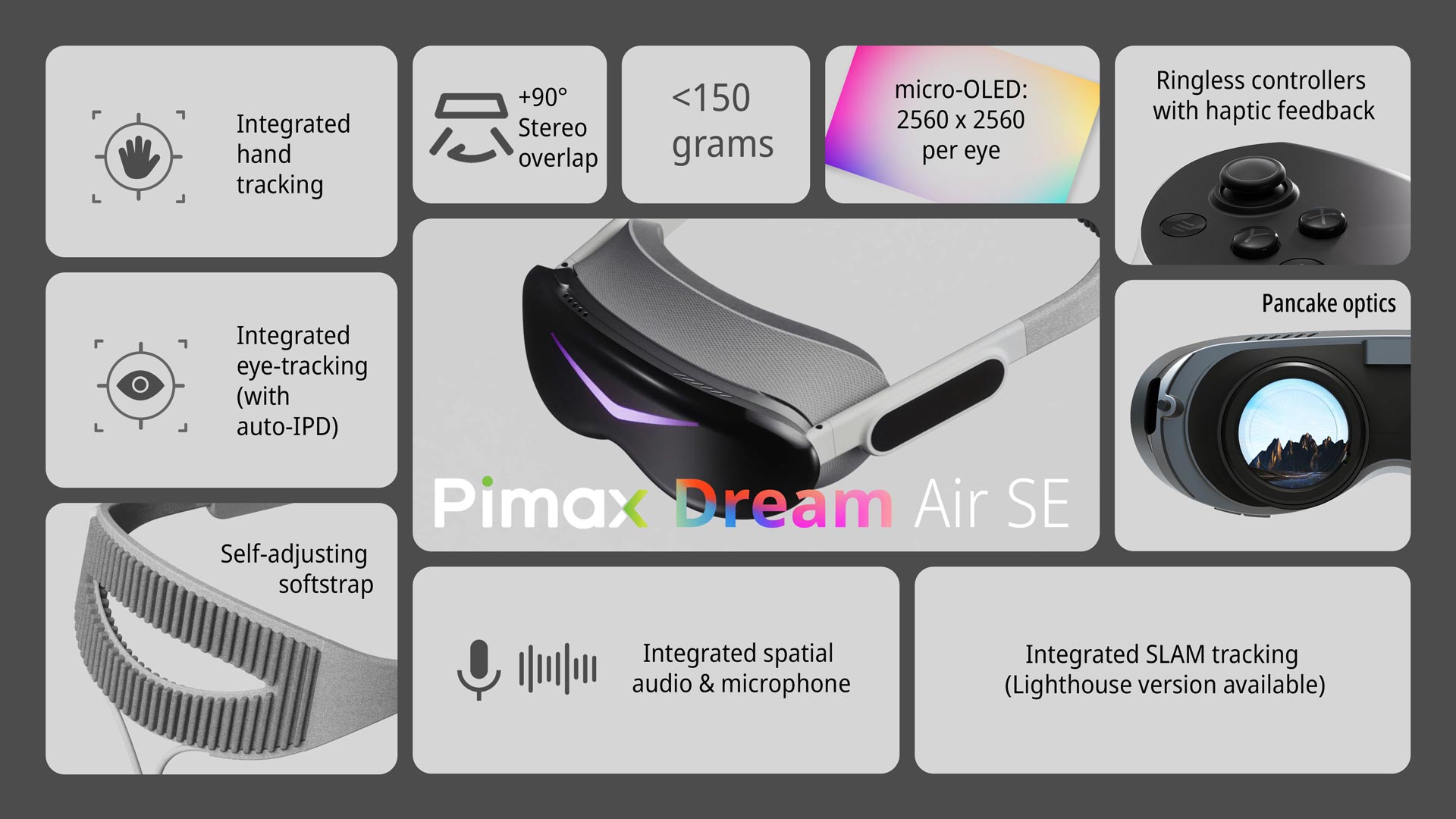VisionAR offers smartglasses that can protect your eyes
Some days ago, my friend and VR professional John Westra suggested me to connect to an Italian AR company called Univet about which he found an online banner. He told me that it seemed interesting, and since I trust John’s judgment, I immediately contacted them.
I so got to know Alessio De Gaetano, that very kindly accepted to have a call with me to explain to me what his company does, and thanks to this, I have discovered that it’s an interesting reality. Univet offers smartglasses that are certified as PPE: since they are the only ones that have this certification, they are the only choice for a small niche of professional customers that needs it (e.g. in the medical sector). These glasses are not sexy at all… they serve a single eye, they are monochromatic, etc… but in the B2B ecosystem you don’t have to be cool, but useful, and the VisionAR smartglasses fit exactly this description.
I didn’t even know that there was this niche in the AR market, and as always, I thought that it could have been a great idea to inform you of the community about it. So, here you are my detailed interview with Alessio about it!
Hello Alessio, nice to meet you. Can you introduce yourself and your company Univet?

Hello Antony and thank you for inviting me! Univet is an Italian company based in Brescia, whose business is to design and manufacture protection systems for the eyes, namely safety glasses, masks, screens, and all related PPE. We were born in 1997 and since then we have never stopped growing, bringing some new and innovative concepts into the PPE world, like design, materials science, ergonomics. We aim to become market leaders in Europe and…we’re not so far!
Among our divisions, the latest one is the spin-off called Eyetechlab: I am the sales manager of the division. VisionAR is our first product on the market.
What are the VisionAR smartglasses you are working on?
Simply said, VisionAR is the first augmented reality safety glasses in the world. And so far, the only one. The first glasses which allow augmented reality to enter effectively into the industrial and professional world, integrating the AR function with the safety function, which is more and more essential for any industrial application.
What’s their backstory?
The story goes back to the end of 2016 when Sony proposed us to integrate their SED-100A, that is their holographic waveguide, into a pair of glasses suitable for prolonged use: comfortable, reliable, and light. We happily accepted the opportunity! We made a first prototype called “5.0”, presented in the 2017 edition of the CES, in Las Vegas.
The feedback was exceptional so we decided to embrace the project and engineer a product that could enter the market: it took a long time, especially for the PPE certification. We had the finished product (and certified) in stocks starting from August 2019. A long way! But trust me, the certification process is already difficult for a standard pair of glasses, for VisionAR it was exceptionally intense! Also for this reason we are the only ones in the world proposing such a device.

Can you tell us their specifications?
Sure! Let me list the main numbers:
- Resolution: 419×138 px
- FOV: 20° (diagonal)
- Brightness: 2000 nits
- Transmittance: > 85% (the fact that the display is so transparent is fundamental for PPE certification)
- Battery life: 5 to 9 hours, depending on use (with our VisionAR Control Unit)
- Weight: 90g (glasses), 250g (VisionAR Control Unit – belt-mounted)
- Sensors included: 3-axis accelerometer, magnetometer, gyroscope, 5Mpx autofocus camera (detachable)

Your device is an all-in-two. Can you tell us what devices can it be connected to?
VisionAR is a passive device, similar to a cabled keyboard. This means that it doesn’t fit a battery nor a CPU. Thanks to this we managed to keep a light weight and to certify it as a PPE. For this reason, VisionAR always needs an external cabled control unit: we do propose our native VisionAR Control Unit, based on Linux OS, but this is not mandatory. VisionAR can be connected to any Windows 10 device (desktop or mobile) and any Android 6.0 or later device (given the hardware compatibility).
Anyone can choose the best fitting device for the application he needs. In addition, every different OS brings some specific features which could make VisionAR better suiting determined applications rather than others.
Why have you chosen Linux as the main operating system for your headset?
Well for a bunch of reasons: it is the most industrial OS of them all, it is much more reliable than others and much more stable, it’s also easier to customize it in detail since it’s an open system. This means also that it is much safer than the others, from a point of view of data safety.
Your glass is certified as a PPE (Personal Protection Equipment). What does it mean? And why is it so important?
Generally speaking, in order to protect an operator during his activity, he needs some kind of device to cover his eyes: all these are called PPE, together with other devices protecting other parts of the body. Univet is a leader in these eye-protecting PPEs since it’s nearly 25 years of experience at the base of the product range of today.
Having AR with PPE certification brings some important benefits: first of all, for the first time ever, bringing new technology in the real world will be much easier than in the past, since the safety manager of the companies will have all the official documentation and paperwork to make the risk assessment before equipping the workers. Secondly, the safety glasses become a working tool: imagine that in order to see your production order or your machine data you need to wear your safety glasses! This means that you cannot work anymore without, so your safety is immensely improved compared to the past when you could “forget” your safety glasses somewhere and simply go on working.
What makes you stand up against the competition?
PPE certification is the main feature: VisionAR has no alternatives in the world of glasses. In addition to this, we developed it with the idea of flexibility. Mechanically, the structure of VisionAR allows to replace lenses in a couple of seconds, so that you can choose the best one according to the environment, it’s also possible to detach the optical module and share it with different colleagues, mounting different frames on it. Frames are cheap and personal, the optical module (much more expensive) can be shared and sanitized.
From the point of view of the software, flexibility means that VisionAR is much more a platform than a device. Each integrator or user can choose which features to exploit, what control unit to attach to it, they can decide to work on the cloud or on local, being sure that VisionAR could be connected to the latest control unit in terms of computing power, memory, and so on: this would slow down the obsolescence rate! Nobody else could offer this nowadays.
In which industries your devices is mostly used? Can you tell us about some use cases?
Nowadays the most recognized use case is remote assistance, also due to the dramatic Covid situation. However, VisionAR is designed to give the best effects also in two additional cases: logistics and operative instructions, which includes functions related to manufacturing and maintenance.
Are monochrome monocular glasses enough for enterprise applications? Can’t you do more?

Having a monochrome monocular display could sound like a limitation if you look at it with the eyes of a consumer-focused product. However, if you look at it from the point of view of a professional tool, you will immediately realize that it’s the best choice possible. What an operator needs for the everyday activity is not a 3D model, but some text and some data, maybe some simple schemes. This allows to detach one display from one eye and give up on the third dimension. In addition, having a full-color display would bring to distraction: have you ever tried not to focus on a colour see-through display while you are doing something else? This is nearly impossible, while it’s extremely easy for a single color display. For this same reason, green color and green color scale was always the only choice for HUD displays for all the potential applications (aerospace, cars, medical purposes, etc.).
So, since VisionAR has the target to equip operators whose activity might be even a dangerous one, having a technology that won’t distract is a plus.
What are the future projections for your smartglasses?
VisionAR is a revolution in the market. We strongly believe that it will stimulate new ideas to be integrated into the next generation of safety smart glasses: if so, we will be ready to work on that. Augmented Reality Safety Glasses are just born, we will bring them on for a long time.

Some people say that smartglasses are not AR. How do you answer them?
This is correct. Augmented Reality is a technology and Smart Glasses are devices that might include AR. However, AR can be integrated into different devices (not smart glasses) and some smart glasses don’t have AR onboard (for example, some of them have just audio connection, microphone, or similar).
How is the XR ecosystem in Italy, and how does it compare to the one that is in other countries?
My impression is that in Italy the ecosystem is growing at a very high speed. Italian developers and integrators are reacting very quickly in understanding how the new technologies are coming up. In other countries, the situation is more organized and structured on one side, but less flexible on the other. At least this is our impression so far, but there’s still a lot to learn and a lot to build!
Is there anything else you would like to add to this interview?
While I thank you once more for this opportunity, I would just remind everyone that we are promoting a Partner Program for VisionAR to be more and more integrated on IoT platforms as much as developed with apps for the end-users. So I would suggest to come and visit us at www.univetar.com to find details about this and maybe become part of our ecosystem!
I thanks Alessio for the time it has dedicated to me, and I really hope that this article has given you more insights about the world of smartglasses for industrial uses. If it has been the case, share it with your peers in the XR community that work in the B2B sector!
(Header image by Univet)
Disclaimer: this blog contains advertisement and affiliate links to sustain itself. If you click on an affiliate link, I'll be very happy because I'll earn a small commission on your purchase. You can find my boring full disclosure here.



